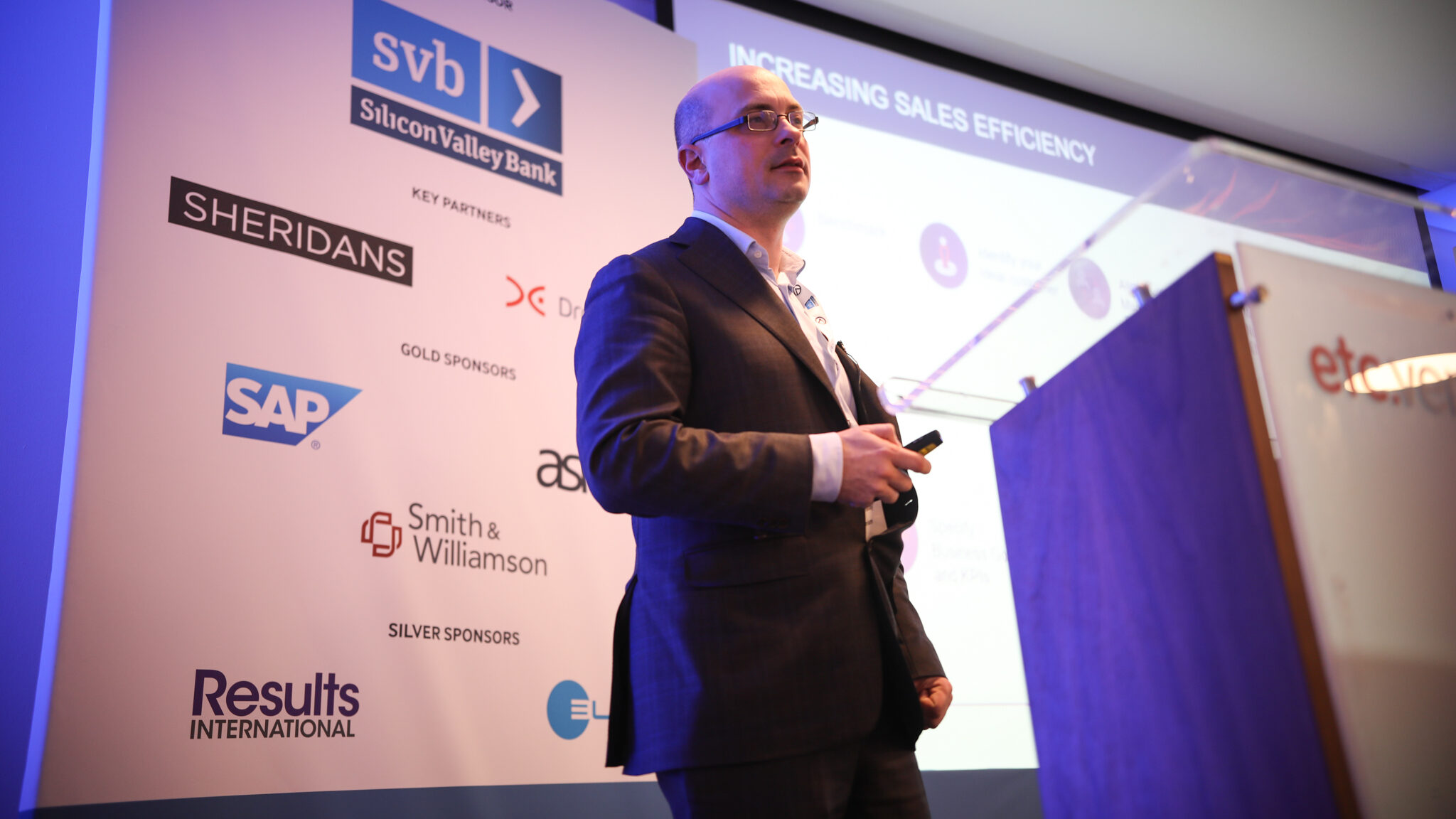The spread of the coronavirus and the response of central banks to it have led to major price moves in public markets, in equities, bonds, oil, and other assets. The ability to buy and sell them continuously is generally seen as one of the big advantages of public markets. Shares in startups are harder to sell, which is seen as a disadvantage. In this article, I want to argue why this view might be worth reconsidering.

Startup Journalist
About the author:
Eugen Stamm joined Verve Ventures in December 2018 and works as a Startup Journalist. Before joining Verve Ventures, Eugen worked as a financial journalist for Neue Zürcher Zeitung. He has a Master’s degree in law from the University of Zürich.
Some years ago, I attended a seminar for aspiring day-traders. It was one of the most disappointing events I have ever been to.
Right in the heart of Zurich’s financial district, it was a big fiesta organized by one of the two Swiss global banks. There were hundreds of people in the audience. With a few exceptions, they were men. You could distinguish two tribes. About half of them were over 65. Many of them had an air of discomfort about them. They were clutching their briefcases too hard, or they were checking out the audience too obviously. Did they just have more free time on their hands now that they were retired? Or did they hope they had retired with a bit more money, as miraculously conjured out of “the biggest game in town”, the stock market? Maybe they were looking for a fresh perspective and new ideas.
The other tribe consisted of the quintessential young capitalists. They were barely above twenty years old, with clothes too new and flashy and egos to match them. Their eagerness to make a quick buck was palpable. These guys believed they were going to leave a mark. They believed they knew how to make fast money and were eager to convince others to see the same tiger in the mirror.
This audience was impervious to the disappointments and losses that day-trading could hold in store for most of them.
I attended the event as a journalist and out of curiosity, but it just confirmed my view that the endeavor of doing countless small trades every day is pointless if you’re not a machine and have to pay higher transaction fees than large institutions do. I’ve also never believed that if you look long enough for patterns in price charts you’d be able to infer if prices will go up or down. And, I think that not many self-respecting investors who know the difference between investing and speculating would mingle with such a crowd, sheep being led to the slaughterhouse dreaming of making a killing.
Self-perception versus reality
Contrary to aspiring day-traders, most people think of themselves as long-term investors, and in general, their financial advisors exhort them to think this way, which perfectly makes sense. If you want to realize the long-term returns that equities have achieved in the past, well, then you have to be in for the long term. It also feels right, if you can muster the necessary detachment to ignore the daily gyrations of the markets and proudly tell yourself: “I can ride out a market storm”.
Except, of course, if you can’t. The thing is, everybody thinks that they can stomach losses when the markets steadily climb upwards. At the same time, experienced advisors know that as soon as these losses start to materialize, investors eventually start to lose their calm. The bigger the moves, the more urgent the pressure to sell, the more likely they throw in the towel and start selling too. A trusted advisor might convince them not to do so with much hand-holding, but sometimes the panic is too widespread. The reason for this, I believe, is that you cannot precisely estimate in advance how much pain you’re able to endure, and decide when it is time to sell. Actually, experiencing a loss of 35% of your portfolio value is frighteningly different from proclaiming that you can withstand such a loss without a problem. Many investors have learned this the hard way during the financial crisis. If they were forced to sell in 2008 when the market was down and stayed on the sidelines, they would not have participated in the subsequent 11-year rally. Also, experience shows that most long term investors are also not at all disciplined in taking losses. Once a stock starts going down, many wait, hoping that it will bounce back. Often it does not, but sometimes it comes back up due to contrarian buying, only to go down again. It is not often that a stock gaps down 35% in one shot. First, there may be a 10% drop, followed by a 5% recovery. Then there is a 15% drop, a pause of a few weeks and, say a few ups and several bigger downs leading to a 35% total drop. The story does not end there. Once 35% down, does one sell or hope for a rebound? Such decisions should perhaps be made at the start of the investment.
When it comes to trading any asset, a fundamental consideration is liquidity, which one can define as the ability to trade a “certain amount” of an asset within a short period of time. It often means the ability to sell at the wrong time, when all is going south. Of course, during times of crisis, liquidity often dries up; which means that you’ll be only able to sell at very bad and discounted prices, or maybe not at all. In the market for listed securities, liquidity usually goes hand in hand with position size. Anyone can, on any day, sell a CHF 1 million of a large-cap listed company. It is much harder and more complex to sell 2% of a small-cap company. There are also small-cap listed companies (especially across Europe and the US) with a market capitalization of below EUR 200 million, say 51% of company held by the founding family and two other investors owning 20%, leaving freely trading shares (free-float) of 25%. It is not unusual for such stocks to trade, say EUR 20,000 per day, and none at all on some days. Selling a EUR 5 million position in such a company is is not dramatically different from selling shares in some unlisted start-ups. If a buyer is found, it would probably bid a price at with a greater than 10% discount to the market.
Furthermore, what many non-professional investors are impervious to, is that liquidity also goes hand-in-hand with “information”. Listed stocks with lots of analysts covering them are always more liquid than those ones with few or no analyst coverage. Indeed, this is why initial public offerings try to establish analyst coverage, as without this, professional and institutional investors stay away and liquidity dries up.

Invest in Startups
As one of Europe’s most active venture capital investors, we grant qualified private investors access to top-tier European startups. With investments starting at EUR/CHF 10’000, you can build your own tailored portfolio over time and diversify across stages and sectors.
Active investing versus overtrading
Liquidity is also problematic during good times. The possibility of trading easily actually encourages trading activity. There is, of course, nothing wrong with adapting your investment strategy to changing circumstances, as you digest information about the wider world as well as individual companies. But running after the latest trends and shifting frequently between them does, not only engender trading costs but also increases the possibility of joining fads too late. The lesser experienced and informed an investor is, the higher this risk. Studies have shown that individuals tend to overtrade and lose substantial amounts on transaction costs. Checking your portfolio performance every day on your mobile phone is a widespread addiction, and I’m not sure that this alone makes one a good investor. I’m the first one to admit being guilty of this habit, but luckily I managed to kick it.
With startup investments, there is nothing to check on a daily basis. One invests on foresight, analysis, advice and knowledge and waits a few years hoping to have called it right.This brings me to one of the most prominent features of owning shares in a startup, namely, the near-impossibility of selling them at one’s own discretion and at short notice. Granted, sometimes transactions do happen, usually facilitated by the startup itself, but this is a slow and painful process and you’re not sure if and when you’ll be able to sell, and if someone will actually offer a satisfactory price, and even what the right price should actually be. So, for all practical purposes, if you decided to invest, you’re stuck with that decision until liquidation (the happy end), otherwise called the “Exit” (when the startup is purchased by another company or goes public). The time span between the initial investment and a return is measured in several years. Being stuck with a decision you once made, and not being able to change it, this feels very weird if you transition from investing in public markets into private ones like I did. Inevitably, this means regretting some decisions and telling yourself that at least you should have invested less in some cases.
Investing in startup shares means accepting to invest for the long term in its true sense and being able to live with that decision for a few years. The stark reality of this is discovering that a few years of actual time feel much longer than expected. Startup investing requires a fundamental judgment about the future of the company. The real danger is miscalculating your personal liquidity needs in the mid-term. At no point in time in my life were I able to tell with any clarity how different my personal situation would be in seven years’ time. Maybe this kind of foresight will get easier with age, maybe not. To avoid this type of liquidity risk, one should not invest money in a startup that may be needed in short term. Furthermore, I have no idea what investment opportunities might come along next year, and would like to keep some dry powder. Working for a VC platform gives me an idea what opportunities might substantiate in the next few weeks and months, which is very helpful. Ideally, diversification in startup investments should be done not only across industries and countries, but also across time. After a long period of only investing, the exit proceeds should start manifesting themselves so that they can be reinvested in new startups.The risk-taking mentality behind startup investing is not just about taking a big bet and hoping to get 10 times your money back. Rather, it is about systematically making, say, 10 diversified investments, hoping that several of these will return a 10 times multiple, and accepting that some of the start-ups may not make it.
Sitting out the crises
The difficulty of anticipating one’s own liquidity needs over a very long period of time should encourage caution. This means that you should only invest a portion of your wealth in illiquid assets such as startup shares. I am, however, not a fan of general and often repeated rules like the one that it should only be 10% of your portfolio or similar advice. This is a personal matter that defies standardisation. You can decide what is right for you once you get started and spend a few years investing in startups.
That being said, the illiquidity of startup shares also means being forced to hold on to them in times of crisis. There is no stock ticker to nervously follow. Only if there is a priced financing round at a lower price than in the past (a down round) will a new price be revealed. And, if the trouble for a given startup is temporary, as it is, for example, with coronavirus-related slowdown of business, investors are encouraged to invest in down rounds to keep the company going. As a result, you not only don’t sell in bad times, but double down on your investment. This should also be the way to act in the public equity market, and the most sanguine investors do, a good way to achieve excellent performance over time. In the startup investing world, this exemplary behavior can still lead to a complete loss if the company eventually fails. But some would argue that the illiquidity of startup shares is at the core of the very school of investing: “Think very hard before you commit capital, and stay your course even in bad times.”
Having spoken to many startup investors, I have come to realize that many private investors like startup investing because it embodies their own aspirations and mind-set. Instead of setting up their own businesses and dealing with the hard work, stress and pain of growing their own company from scratch, often at substantial sacrifice of family and leisure time, they invest their money so that other, bright, ambitious and hard-working entrepreneurs do it for them. I therefore put it to you that most private startup investors are entrepreneurs at heart.
Written by
WITH US, YOU CANCO-INVEST IN DEEP TECH STARTUPS

Verve's investor network
With annual investments of EUR 60-70 mio, we belong to the top 10% most active startup investors in Europe. We therefore get you into competitive financing rounds alongside other world-class venture capital funds.
We empower you to build your individual portfolio.
More News
04.02.2022
“The maths
don’t lie”
James Isilay built sales tech startup Cognism into a growth machine and just raised a massive Series C financing round. In this interview, he talks about his numbers-based management approach, the importance of outbound sales and how he plans to grow Cognism into a unicorn.
04.01.2021
Founders investing in founders:
Stefan Brunner
In this series, we portray successful founders that invest through Verve Ventures in the next generation of founders. We start with Stefan Brunner, who exited two companies already and is now an active business angel.
15.10.2020
Informed decision-making when investing in startups
When it comes to startup investments, are you just betting or taking an informed decision? In this article, we argue that getting good information in private markets is hard work but quintessential for success.
Startups,Innovation andVenture Capital
Sign up to receive our weekly newsletter and learn about investing in technologies that are changing the world.




